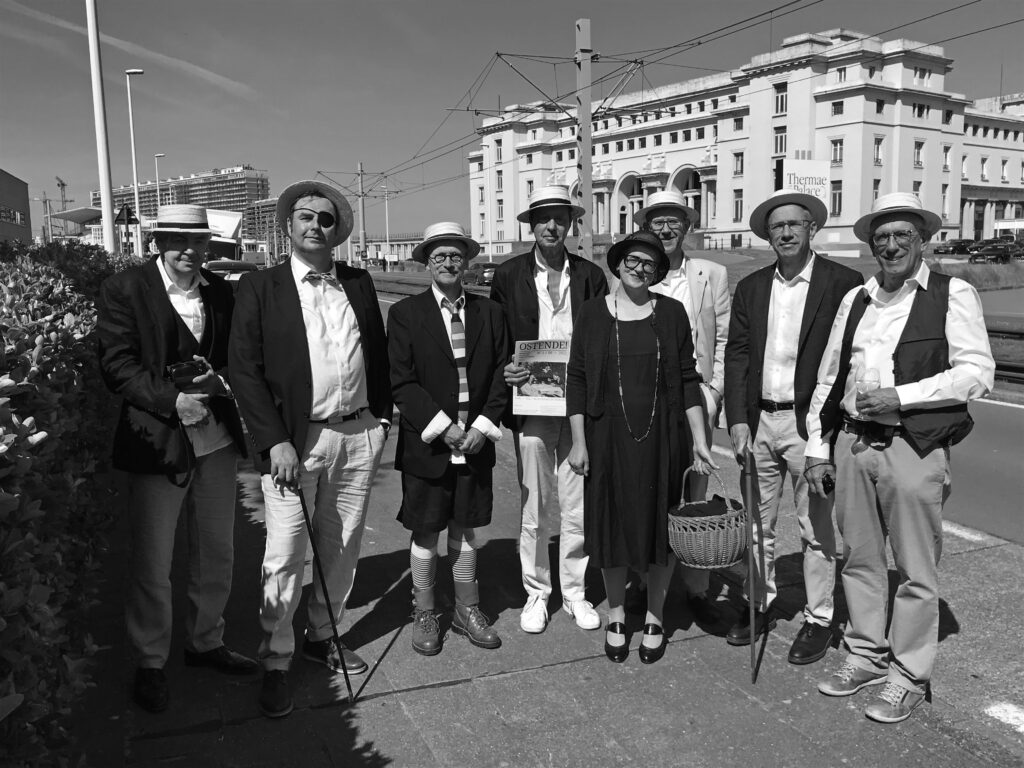
Bloomsday in Ostend was a huge success and we thank everyone who participated: you made the day! Click on the Bloomsday menu above for a slideshow of Jef Van Eynde’s photo reportage of the proceedings. Enjoy!
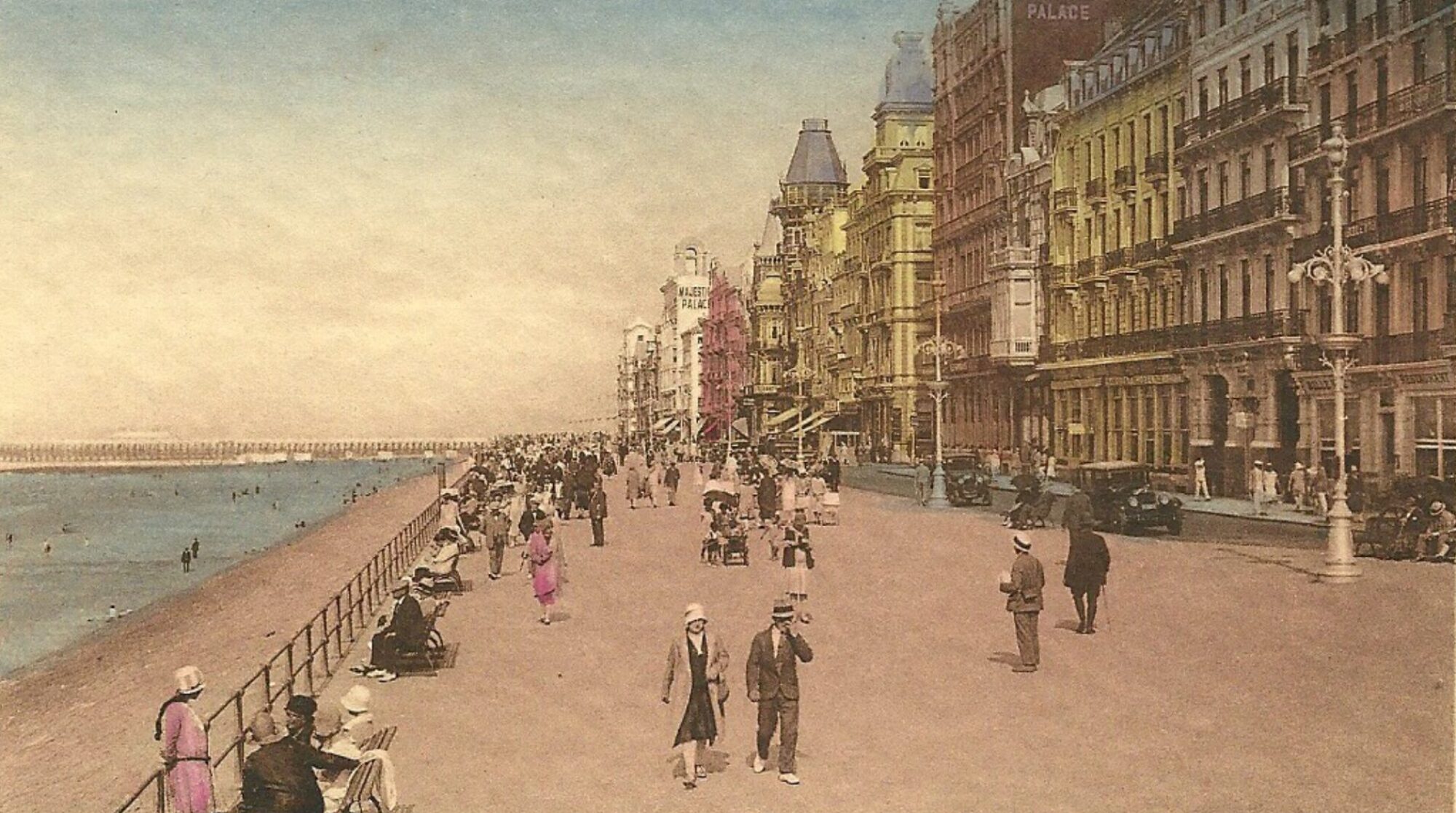
A cultural history of Ostend

Bloomsday in Ostend was a huge success and we thank everyone who participated: you made the day! Click on the Bloomsday menu above for a slideshow of Jef Van Eynde’s photo reportage of the proceedings. Enjoy!
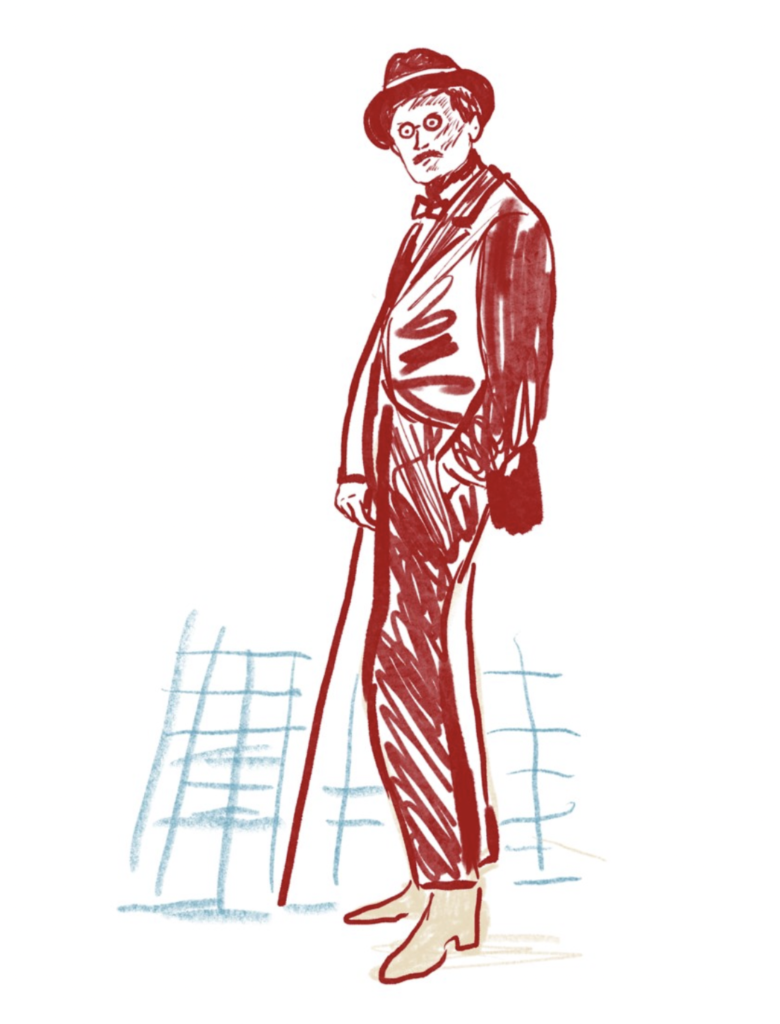
Bloomsday in Ostend was featured in ‘De Standaard’ on Saturday 11 June. Article by Koen Peeters. Read the text here or visit the newspaper’s website: De Standaard.
Full programme!
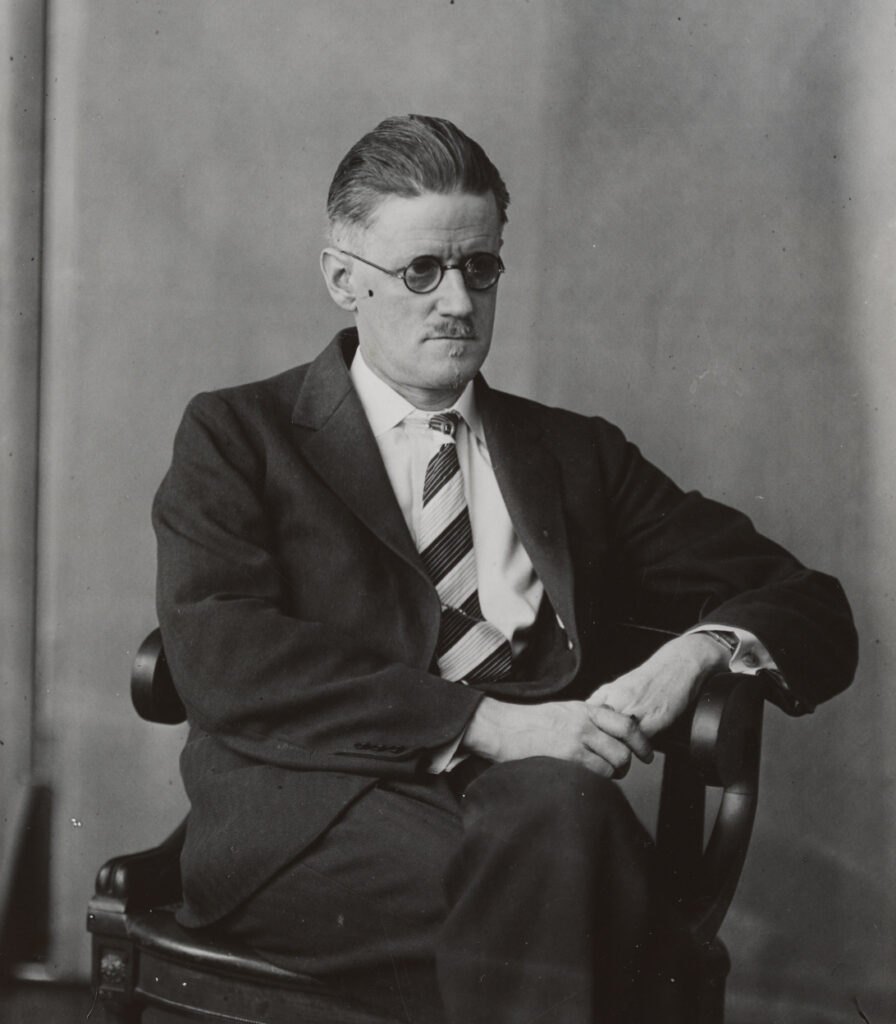
Only ten more days until we celebrate Bloomsday in Ostend. Join us on 16 June as we celebrate the centenary of Ulysses in the city where James Joyce spent his summer holiday in 1926. Dress up! We’ll be celebrating in the sartorial style of 1926. There’s an exhibition of eighteen original prints based on Ulysses in the Ostend Library, the launch of a new gazette Ostende!, a picnic (bring your own food and drink), live music and song, a James Joyce walk along the promenade and pier, all interspersed with readings from Ulysses in multiple languages.
Click on the Bloomsday menu option above for all the details.
Click on the Ostende! menu option for details of the gazette.

Bloomsday kicks off on 16 June with the opening of JAMES, an exhibition by Hans Verhaegen in the Ostend Library. Using his own unique font, the artist has created a ‘translation’ of ‘Ulysses’ by James Joyce. All 1.726.112 characters in the book are transformed into a series of eighteen digital prints. Join us at the Library for the opening on Thursday 16 June from 10.30 – 12.30. We’ll be dressing in the style of 1926, the year that James Joyce spent his summer holiday in Ostend – will you?
Bibliotheek Oostende Wellingtonstraat 17 8400 Oostende
Click here for library opening hours

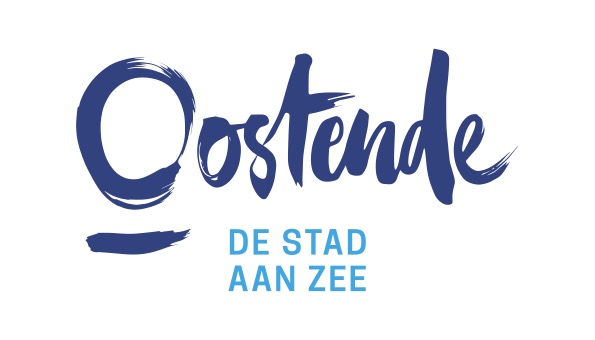
BLOOMSDAY IN OSTEND, 16 JUNE 2022
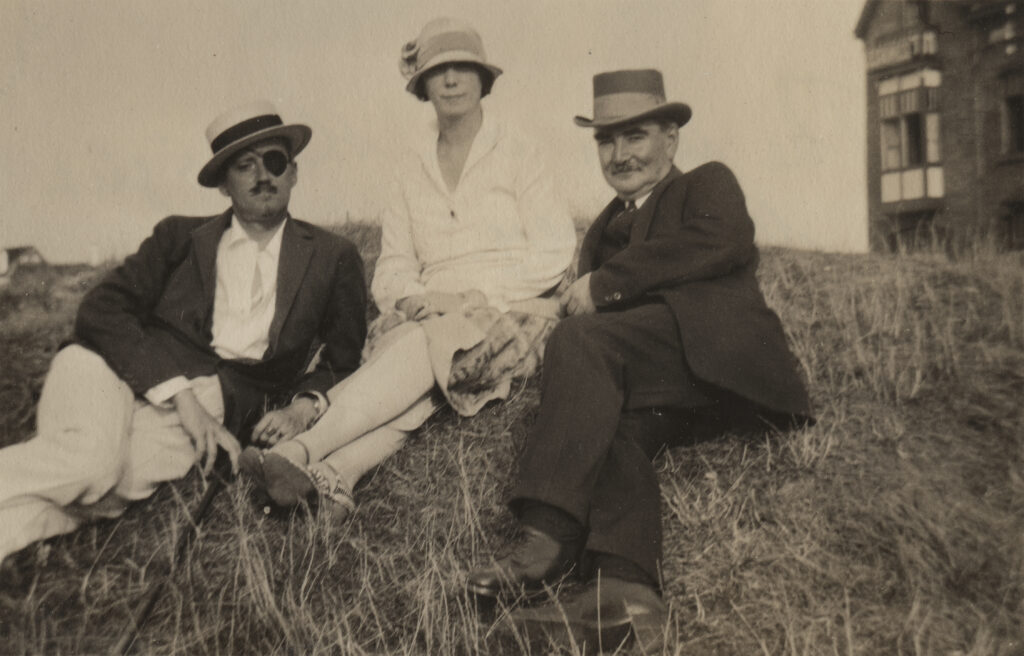
It’s not long to go until we celebrate Bloomsday in Ostend on 16 June 2022! We’re also launching Ostende! a special gazette featuring original texts on James Joyce and other cultural figures associated with the city. With contributions by Dirk Beirens, Philippe Braem, Koen Broucke, Paul Claes, Adriaan Gonnissen, Geert Leernout, Nicola Nord, Koen Peeters, Jean-Yves Plamont, Helen Simpson, Els Snick, Hendrik Tratsaert, Xavier Tricot, Jef Van Eynde, Lieven Van Den Abeele and Hans Verhaegen. Designed by Lodewijk Joye.
Expect an art exhibition based on the book by Hans Verhaegen in the municipal library, readings from Ulysses in different languages and dialects, a picnic on the beach (bring your own) and much more… Full details to follow soon!

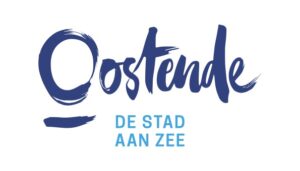
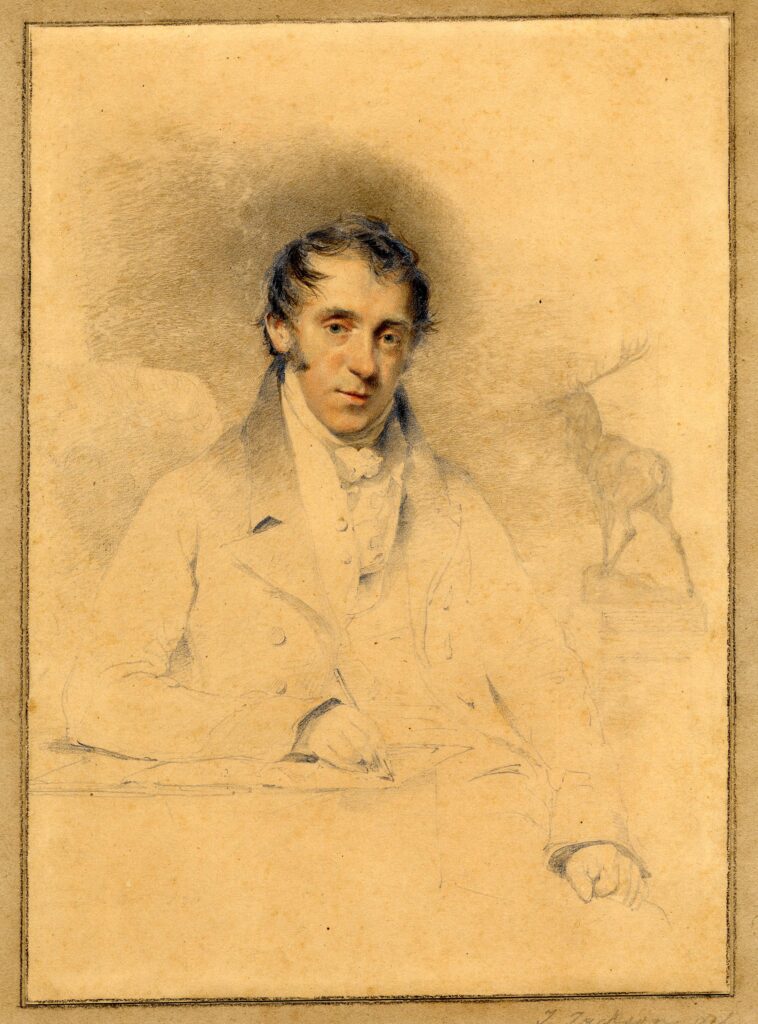
Meet Robert Hills (1769-1844), artist, etcher and writer, who sailed from England to Ostend on Saturday 15 July 1815. The history of the city is synonymous with journeys and voyages: for some it was the starting point for a great adventure, for others the end of the road. Both gateway and terminus, but also a beloved holiday destination, Ostend has been immortalised in print by countless artists and writers. What did Hiils think of the city he docked in over 2OO years ago? Read the account of his voyage and arrival below.
We were in sight of this port at an early hour on Sunday morning: thus you perceive that our passage, though rough, was a short one. The incidents of dawning day were interesting; we passed amidst several large transport filled with wounded men from Waterloo, and saw numerous flights of wild foul, all bound, apparently, like the ships, for Old England. On our left, lines of batteries were pointed out, which had been constructed by order of Buonaparte, so extensive that ten thousand men would have been requisite for their defence, and on our right, we had a view of the church and the town of Nieuport.

The harbour, which was crowded with English transports, and other shipping, has depth enough to admit vessels of considerable tonnage, and may be navigated without difficulty, because the track is indicated by a pier of open timber work that stretches in a bended line to nearly a mile’s length in the sea, but the shoals of sand that lie about its approaches in every direction render it of dangerous access without an experienced pilot.
As we approached the Quay our arrival was greeted by scores of miserably looking vagabonds, who were scuffling and quarrelling with each other for front places, and the harvest resulting from their obtruded services on those who had portmanteaus and other baggage; we omitted to show them our passports, which required all persons lasisser passer sans aucun empechement, and, upon landing, the violence of these people increased to a degree that hardly left us the liberty of choosing our porters. It is a pity that the police here, so rigidly exactive of obedience to regulations in other matters, does not protect strangers from this nuisance: a gentleman who arrived in the packet preceding ours was robbed of his portmanteau; it was torn from him amidst such a scene of confusion as that just described, and the fellow who seized it contrived to whisk it through the crowd so quickly that the owner lost sight of him.
Happy at length at a clearance from these troubles we were accosted by Douaniers, whose badges of office were large, cocked hats, with orange cockades and swords; they inspected our trunks with great civility, and directed us to leave our passports for examination at a large house in the rue du Quai, where, atter some trifling delay, owing to the absence of the officer, they were indorsed with a permission to proceed to Brussels.
To be continued….
Biography:
Robert Hills (26 June 1769 – 14 May 1844) was an English painter and etcher.
Hills was born in Islington. He initially studied under John Alexander Gresse, then enrolled at the Royal Academy of Arts in 1788. He primarily painted rural scenes, particularly farm animals. A number of his renderings can now be found at the British Museum.
Hills was known to draw animals in works of other artists, such as George Barret, Jr. and George Fennell Robson. He published Sketches in Flanders and Holland Sketches in Flanders and Holland; with some account of a tour through parts of those countries, shortly after the battle of Waterloo (1816), with his own aquatints. It was keenly studied by J.M.W. Turner whose first visit of five visits dates from 1817.
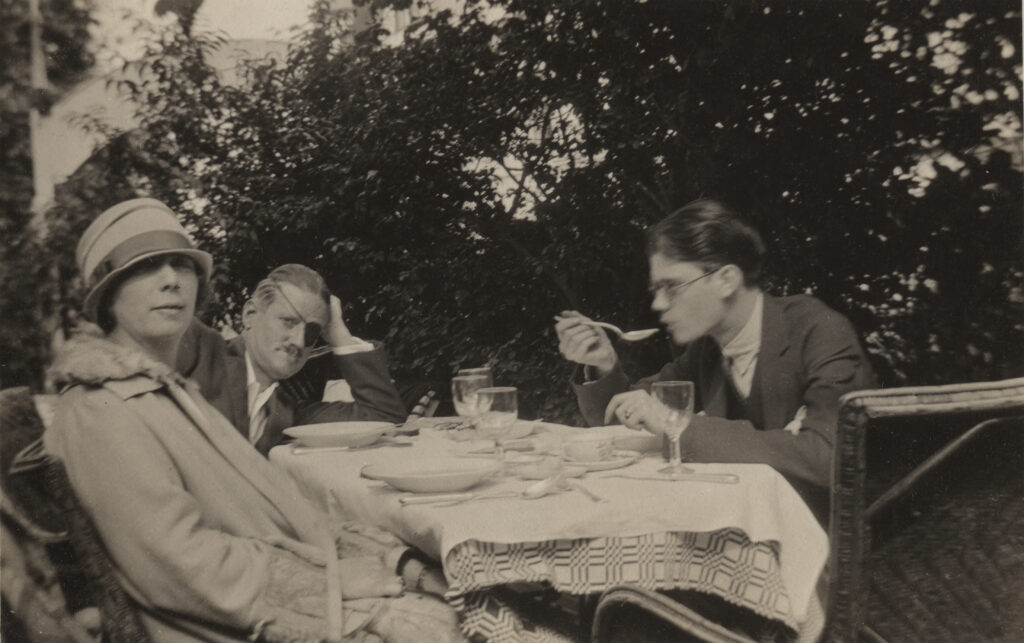
Celebrate Leopold Bloom and the centenary of Ulysses in Ostend
16 June 2022
Readings, events, and performances – details to follow
Plus the launch of Ostende! a special Bloomsday publication dedicated to James Joyce and other eminent figures connected to the city.
Few realise it, but Ostend has its own unique connection to James Joyce. Four years after the publication of Ulysses, the author spent a happy holiday in the city with his wife, Nora, and their two children. It was the summer of 1926. Joyce wrote letters and postcards to his friends while here, many of which survive, as does an evocative set of photographs. This material forms the basis for Xavier Tricot’s detailed account of James Joyce in Ostend.
Ulysses is undoubtedly one of the most famous books about Dublin. Written over seven years in three different cities, and totalling 265,000 words, Joyce’s epic novel depicts the events of a single day in the city. The protagonist is one Leopold Bloom. Dublin has been celebrating Bloomsday on the anniversary of the date that features in the book – 16 June 1904 – since 1954. From small beginnings, it is now a city-wide festival that attracts an international audience. But the festivities aren’t limited to Ireland: Bloomsday is now celebrated by Joyce lovers around the world. This year, the party will be extra special as Ulysses turns 100.
Celebrating 100 years of a literary masterpiece
On 2 February 1922, Paris bookseller Sylvia Beach – founder of the legendary Shakespeare & Company – published the first edition of James Joyce’s Ulysses. It was a brave decision. The editors of The Little Review, an American literary journal that published excerpts of the book, had been tried for obscenity the previous year (effectively banning the book in the US). But Beach was undeterred, writing to her friend Marion Peters:
Dear Marion,
… My shop is a great success and self-supporting and all that sort of thing and just think I am publishing a book now. Ulysses by James Joyce, the greatest book and author of the age. . ..! You probably saw in the papers the uproar caused by the trial of the Editors of the Little Review for printing some of Ulysses in it, and how they were fined $100, and their thumb prints taken. Nine stenographers gave up the typing of the last episode here in Paris and a gentleman from the British Embassy burned a dozen pages . . . he threw ’em into the fire in a rage. Ulysses is a masterpiece and one day it will be ranked among the classics in English literature. Joyce is in Paris, and I told him I would publish his book, after the publisher in New York threw up the job in a fright.